The Valdes Peninsula, in Argentine Patagonia, is home to the only continental reproductive Southern Elephant Seal colony in the world. This species (Mirounga Leonina) is distributed throughout the Sub-Antarctic region with an estimated population of 700,000 individuals. It is calculated that approximately 20 thousand reach the Valdes Peninsula each year between August and March to mate, give birth and molt. 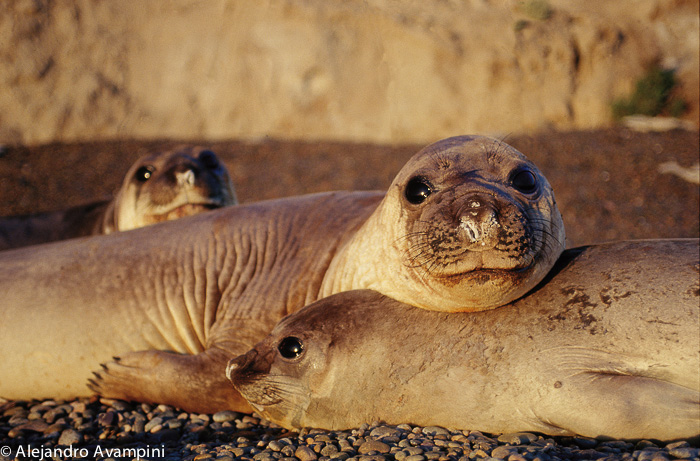 The Southern Elephant Seal is the largest marine mammal to occupy this coastline during its reproductive season. Towards the end of August the first males begin to arrive, marking their territory and gathering their harems with the arrival of the females. The pregnant females are the first to arrive, giving birth just days after. While nursing her pup the female will fast, relying entirely upon her fat reserves. After a short nursing period and mating, the Elephant Seals return to sea for two months of feeding. The adult males of this species reach an unbelievable size. In one of the largest colonies in the Valdes Peninsula, at Punta Delgada, the park administration has set up an informative sign with amazing facts about this animal. Below I have provided some of this information to give an idea of what to expect when arriving at this unique and wonderful corner of Argentine Patagonia.
The Southern Elephant Seal is the largest marine mammal to occupy this coastline during its reproductive season. Towards the end of August the first males begin to arrive, marking their territory and gathering their harems with the arrival of the females. The pregnant females are the first to arrive, giving birth just days after. While nursing her pup the female will fast, relying entirely upon her fat reserves. After a short nursing period and mating, the Elephant Seals return to sea for two months of feeding. The adult males of this species reach an unbelievable size. In one of the largest colonies in the Valdes Peninsula, at Punta Delgada, the park administration has set up an informative sign with amazing facts about this animal. Below I have provided some of this information to give an idea of what to expect when arriving at this unique and wonderful corner of Argentine Patagonia.
Males: 6.20 m. Females: 3.70 m Baby at birth: average 1.30 m. Weight Males: 4 tons. Females: 800 Kg Baby at birth: 40 kg. There are approximately 500 Southern Elephant Seal harems that form along the Valdes Peninsula´s 200 km of coastline consisting of between 2 and 130 females in each harem. The dominant males make up only 14% of the population and can mate as many as 15 times in one day.
There are approximately 500 Southern Elephant Seal harems that form along the Valdes Peninsula´s 200 km of coastline consisting of between 2 and 130 females in each harem. The dominant males make up only 14% of the population and can mate as many as 15 times in one day. Another surprising figure is that 73% of births occur at night and the infant mortality rate is only 4.4%. Males can weigh in at more than 4 thousand kilos, 8 times more than sea lions, and the female weighing as much as 900 kg. Females can lose as much as 13kg per day while nursing and the pup will acquire approximately 4kg per day over the same period. These amazing facts do not end here.
Another surprising figure is that 73% of births occur at night and the infant mortality rate is only 4.4%. Males can weigh in at more than 4 thousand kilos, 8 times more than sea lions, and the female weighing as much as 900 kg. Females can lose as much as 13kg per day while nursing and the pup will acquire approximately 4kg per day over the same period. These amazing facts do not end here.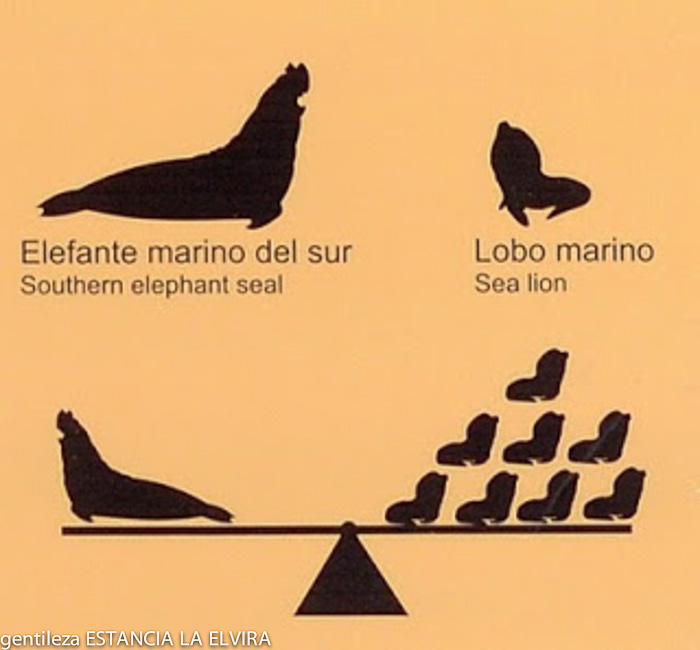 Elephant Seals can make deep, prolonged and continuous free dives, day or night, their ability improving with age, to depths greater than 1,500 meters and they have been tracked covering distances of more than 11,500 kilometers over the course of a year. They will usually spend close to two minutes on the surface between dives, and below the surface they can hold their breath for up to 90 minutes, spending as much as 80% of their time in the water below the surface.
Elephant Seals can make deep, prolonged and continuous free dives, day or night, their ability improving with age, to depths greater than 1,500 meters and they have been tracked covering distances of more than 11,500 kilometers over the course of a year. They will usually spend close to two minutes on the surface between dives, and below the surface they can hold their breath for up to 90 minutes, spending as much as 80% of their time in the water below the surface.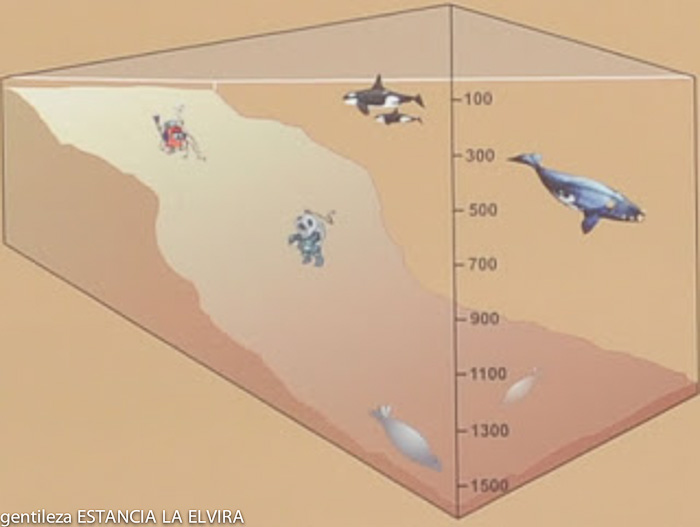 The uncommon dimensions of the Southern Elephant Seal are even more noticeable when compared to any other marine mammal that carries out its reproductive cycle on land. Along the interpretive paths at Caleta Valdes, in the Estancia Elvira, there is an informative sign that compares a male Elephant Seal to a male Sea Lion.The Elephant Seal can weigh in with as much as 8 times that of the Sea Lion at 4,000 kg., amongst other differences. Sea Lions have independent mobility with all four limbs, an external ear structure and an abundant mane around the neck of adult males. Elephant Seals advance by an undulating movement of the belly, without the use of their fins, they have no external ear structure and males do not have a mane.
The uncommon dimensions of the Southern Elephant Seal are even more noticeable when compared to any other marine mammal that carries out its reproductive cycle on land. Along the interpretive paths at Caleta Valdes, in the Estancia Elvira, there is an informative sign that compares a male Elephant Seal to a male Sea Lion.The Elephant Seal can weigh in with as much as 8 times that of the Sea Lion at 4,000 kg., amongst other differences. Sea Lions have independent mobility with all four limbs, an external ear structure and an abundant mane around the neck of adult males. Elephant Seals advance by an undulating movement of the belly, without the use of their fins, they have no external ear structure and males do not have a mane.
Here, the video that made our guests Doug Bertrand, National Geographic producer and his team. A fragment of the documentary called “Killing School”
A week after their arrival, the females give birth to their young which they suckle for about 25 days with high energy milk, producing a weight gain in the pup of about 5 kilos a day, while the mother, with fasting, loses about 9 kilos per day. At the time of weaning, the initial weight of the puppy will have increased by 300%. 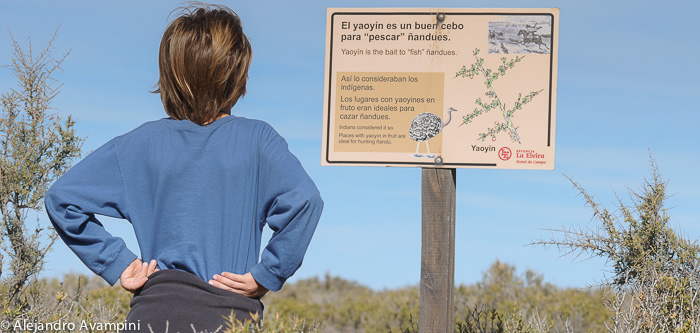 Thanks to the initiative of the Estancia ¨La Elvira¨, owners of the land at the mouth of Caleta Valdes, the interpretive paths created allow the visitor access to information while observing the beach full of wildlife.
Thanks to the initiative of the Estancia ¨La Elvira¨, owners of the land at the mouth of Caleta Valdes, the interpretive paths created allow the visitor access to information while observing the beach full of wildlife.
The last of the informative signs shows the depths that different marine mammals of the Valdes Peninsula can reach. The champion of the deep is the Elephant Seal reaching as much as 1,500mt below the surface, with the Sea Lion close behind at 1,200mt, followed by the Right Whale at 500mt and the Orca at 100mt.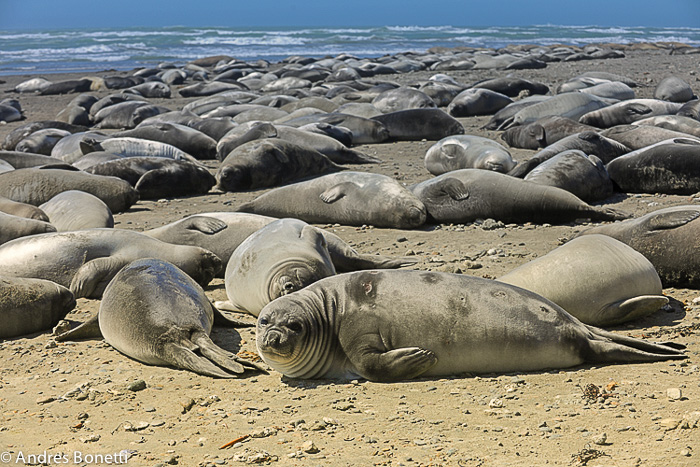 From the beginning of September through the first days of October, Southern Elephant Seals reach the coast of the Valdes Peninsula to give birth and mate, after having spent months in the open ocean. After an effective but not necessarily affectionate encounter with the dominant male of the harem, the female will go through a 12 month gestation period. This species has the characteristic of changing their skin. The molting season begins in November and lasts approximately five months, ending in March. During this period it is common to observe these animals with spots and variations in the color of their skin due to this natural process.
From the beginning of September through the first days of October, Southern Elephant Seals reach the coast of the Valdes Peninsula to give birth and mate, after having spent months in the open ocean. After an effective but not necessarily affectionate encounter with the dominant male of the harem, the female will go through a 12 month gestation period. This species has the characteristic of changing their skin. The molting season begins in November and lasts approximately five months, ending in March. During this period it is common to observe these animals with spots and variations in the color of their skin due to this natural process. Observing the birthing process of these animals on the pebble beaches is an impressive sight that occurs at several different locations along the coast of the Valdes Peninsula. It is not easy to be present at the exact moment, but it is possible. An interesting fact is that only 27% of births occur during the day.
Observing the birthing process of these animals on the pebble beaches is an impressive sight that occurs at several different locations along the coast of the Valdes Peninsula. It is not easy to be present at the exact moment, but it is possible. An interesting fact is that only 27% of births occur during the day.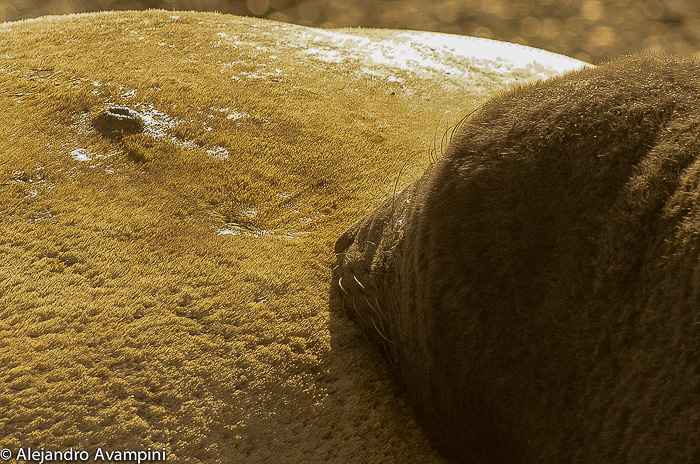 During lactation the mother will not feed and will consume her entire fat reserves. After nursing and mating the Elephant Seals will return to the ocean for two months of feeding. As the days pass and we come to the end of October, the number of individuals will increase, forming a dense colony along the high tide limit in Caleta Valdes, Punta Delgada y Punta Ninfas.
During lactation the mother will not feed and will consume her entire fat reserves. After nursing and mating the Elephant Seals will return to the ocean for two months of feeding. As the days pass and we come to the end of October, the number of individuals will increase, forming a dense colony along the high tide limit in Caleta Valdes, Punta Delgada y Punta Ninfas.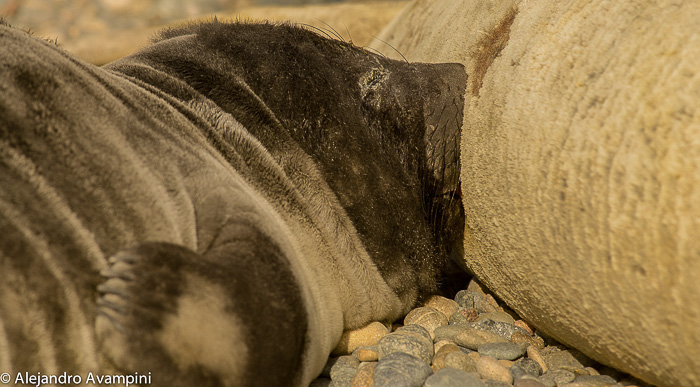 The Elephant Seal Pups, born in the end of September beginning of October in the Elephant Seal colonies of the Valdes Peninsula, have a short nursing period. The pups will suckle the mother´s mammary glands located on either side of her vagina.
The Elephant Seal Pups, born in the end of September beginning of October in the Elephant Seal colonies of the Valdes Peninsula, have a short nursing period. The pups will suckle the mother´s mammary glands located on either side of her vagina.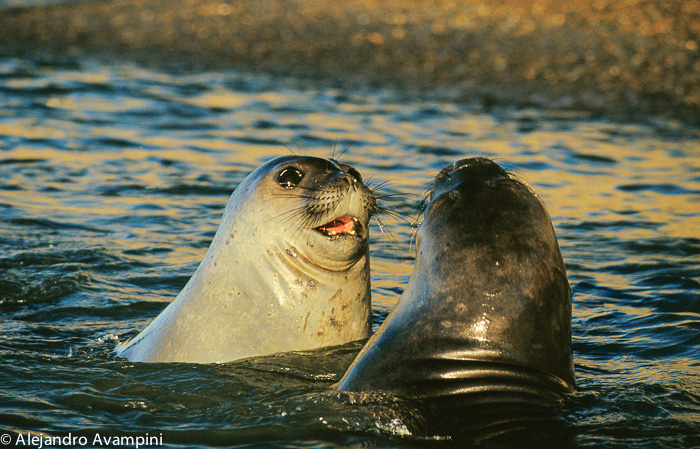 The pups will nurse for approximately three weeks, to then be abandoned by the mother and begin their life entirely independent of their mother´s care. The mother´s milk contains low water content and is extremely rich in fat, allowing the pup to increase its weight by as much as 4kg each day. After weaning, the pup will spend more than a month doing no feeding, surviving on the fat accumulated over the three week lactation period. At an age of just 2 ½ months the young Elephant Seal is prepared to enter the ocean and fend for itself on a diet of octopus, squid and fish.
The pups will nurse for approximately three weeks, to then be abandoned by the mother and begin their life entirely independent of their mother´s care. The mother´s milk contains low water content and is extremely rich in fat, allowing the pup to increase its weight by as much as 4kg each day. After weaning, the pup will spend more than a month doing no feeding, surviving on the fat accumulated over the three week lactation period. At an age of just 2 ½ months the young Elephant Seal is prepared to enter the ocean and fend for itself on a diet of octopus, squid and fish.
Thanks to modern technology used in scientific research and in this particular case, tracking devices attached to the animals and followed by satellite, we can understand the routes taken by the Southern Elephants Seals of the Valdes Peninsula over any determined period. Through a YouTube search we found this related documentary, produced by Claudio Campagna.
“Through compelling stories, Dr. Claudio Campagna will share his experiences as a field conservationist in one of the most pristine marine environments on Earth: the Patagonian Coast. He will tell stories of southern elephant seals, magellanic penguins, South American sea lions and black-browed albatross that make up this enigmatic ecosystem.
Here is another video of the Orcas attempting to hunt a male Elephant Sean during the Sea Lions reproductive season. Very Interesting.
More Videos about Elephants Seals in Valdes Peninsula – Argentine Patagonia
Valdes Peninsula in Argentine Patagonia is a world heritage site that has a plethora of wildlife. With everything from Elephant Seals to Whales to Penguins, there is a ton to see here and you can get right up next to it in the natural surroundings. Much better than a zoo!




